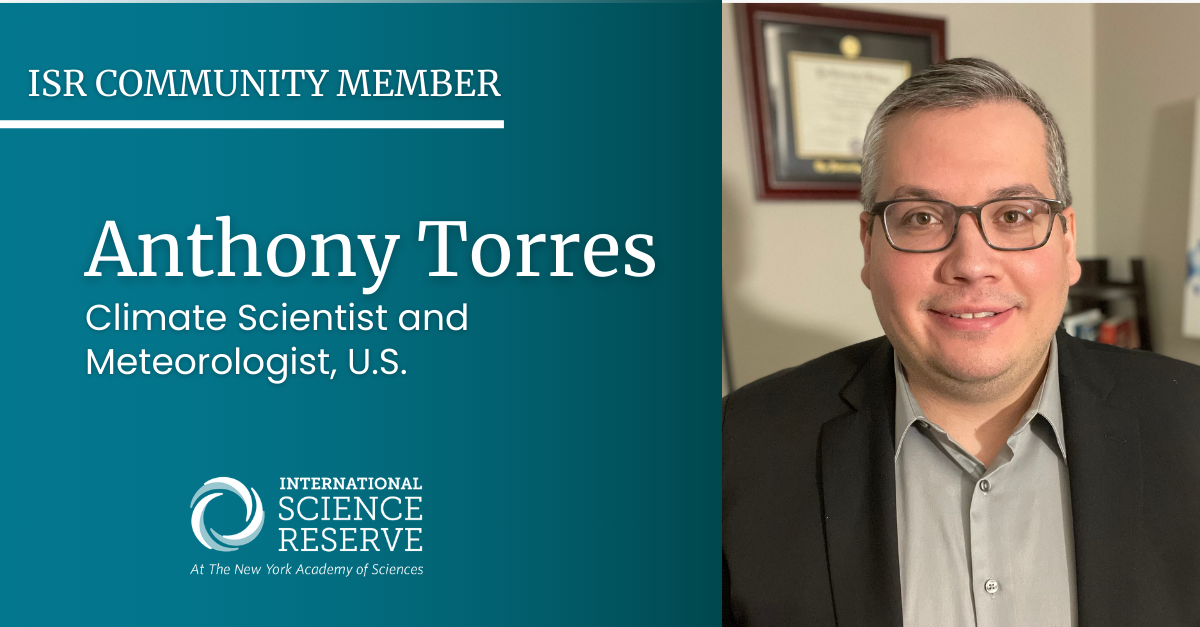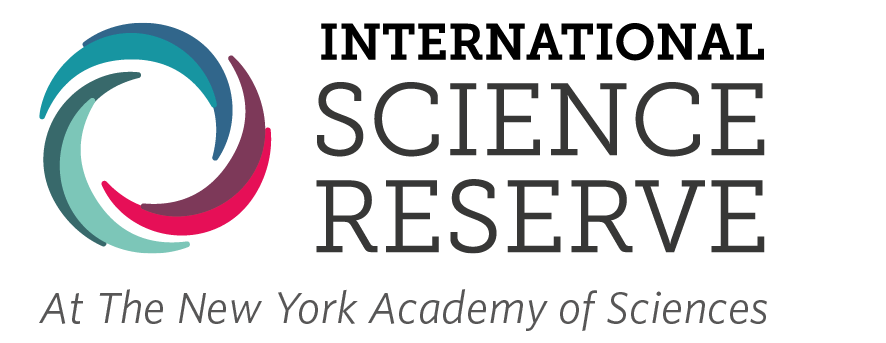Why this weather man wants to break down silos in climate and crisis research
by ISR Staff

As a climate scientist and meteorologist, Dr. Anthony Torres has dedicated his career to researching, teaching, and forecasting climate change and extreme weather. Most recently, he worked with Currently, a startup that provides timely and actionable weather forecasts in 20 cities.
Dr. Torres’ academic research on understanding what drives the behavior of carbon dioxide (CO2) measurements from space has been supported by NASA and gave scientists another way to better understand how much CO2 remains in the atmosphere through 2100. His groundbreaking research also helps climate scientists model how global temperatures might change under various emission scenarios.
Dr. Torres recently spoke to the ISR team about the role of meteorologists in working across silos and preparing the public for climate-related crises and disasters.
How did you get into climate science and meteorology?
As a child, I vividly remember being in a tornado outbreak. I spent the day in the pool until the massive storm clouds came rolling in. By the time we closed the pool, the tornado sirens started blaring and we ran to seek shelter in our house. Soon after, winds in excess of 100 mph wreaked havoc in the area. It turned out multiple tornadoes had also touched down nearby. I remember all of the shattered windows, downed trees, blown lawn furniture, and damaged buildings after the storm.
It was the first time I witnessed the extreme power of nature and I wanted to know more about it. Afterwards, I acquired all kinds of weather books, would watch The Weather Channel, and had my own miniature weather station.
What strategies can experts in the meteorology field use to help better prepare for and respond to climate-related disasters?
There are multiple fronts in which we can improve our preparation for disasters:
First, we need to close the gaps in observations. The US and Europe have dense networks of observations that allow for early detection of weather systems. Even here, gaps in detection networks, such as radar networks in the US, create challenges for detecting tornadoes or other severe weather events. In the Global South, where the density of weather observations is sparser, it is even more challenging to forecast extreme weather events. By closing these gaps, we can better monitor extreme weather events before they happen — giving us the chance to provide adequate warning to everyone affected.
Second, meteorologists need to be more interdisciplinary. While meteorology is a physical science, the impacts from meteorological events are not. The most accurate weather forecast is only as good as how it has been received by its intended audience. Communication is key. We need to work with all of our stakeholders, as well as leverage the expertise of social scientists and disaster experts to build a shared language so that we can maximize the number of people that receive adequate warning of incoming hazards.
What advice do you have to break down boundaries as scientists who care about crisis preparedness?
First, incentivize interdisciplinary interactions. Meteorologists — especially on television — historically have been “general practitioners” of science as science directors at their respective stations. However, we are only formally trained in a narrow subset of science. This has led to the spread of misleading information, which has real consequences. We need to understand appropriate limits of our own expertise and when to defer to others and ensure that everyone is informed with the best information possible based on the best science available.
Second, build channels with communities affected. Often communication is delivered in a top-down method with few channels for bottom-up communication. Social media has helped level conversations in some ways, but it has not nearly gone far enough. Go into these communities with the intent to learn about what is important to them, and how to build effective communication strategies in advance of a potential crisis. Recognize that these communities are not monolithic and that there is no “one size fits all” solution for crisis preparation.
Finally, incentivize stewardship of our disciplines. The careers of scientists are often rewarded by research and publication metrics with a baseline expectation of service work. By shifting the paradigm to weighing service with respect to broader impacts and reaching out to local communities more heavily, we deconstruct the silos built up by the ivory tower.
Meteorologists play a very important role in communicating climate science to the public. What advice do you have?
Despite any narrative to the contrary, my experience has been that most people genuinely crave access to science knowledge. Anytime someone asks what I do, the conversation shifts to weather and/or climate. Use this as an opportunity to relight the passion that got you into science and share that enthusiasm with the people you meet.
Like any speaking engagement, it is important to know and be comfortable with your audience. An awkward conversation or talk is still awkward, regardless of the topic. Find common ground. Remove as many barriers as you can to maximize the connection you make with your audience.
What gives you hope or motivation to keep doing your work, given all the challenges we face today on climate?
Every bit of progress we make counts and makes a difference. The more we limit our planet’s warming, the less we will need to deal with climate changes and extreme weather patterns. The more we are prepared for the next disaster, the less dire the consequences. I remain optimistic humanity will learn these lessons and set forth a path to a better future.


